二、幼儿自然科学中的英语渗透
自然科学中的双语教学对于拓展学生的英语词汇和丰富英语的言语有着不可替代性。英语教材比较偏重于生活的词汇和语言素材,自然科学中的知识型英语学生接触很少。自然科学中的词汇,即使是科普性的词汇在教材中比例也很低,因此无法满足现实生活和正常交往中表述事情和表达思想的需要。应该充分利用自然科学开展双语教学,丰富学生科学技术词汇和提高学生科技性英语水平。
(一)幼儿园自然科学双语要求的落实
自然科学中的教学重视教学内容与生活的联系,包括生物和生命过程、材料及其属性、物理过程和天体等。因此,自然常识学科的双语教学应该针对学生已有的生活经验和知识水平组织教学。
1.自然科学内容的选择应遵循幼儿的年龄特点、现有经验水平、兴趣倾向等。自然知识应该与幼儿的生活密切相关,是直观的、简单的、实用的内容。自然既是教育的内容,也是丰富的教育资源,教育者要充分地发掘、利用各种有效资源为双语教学服务。
2.应通过直观形象的、游戏化的教学,给幼儿提供感知、内化、使用知识的机会。幼儿的思维具有直观形象的特点,而自然常识学科的英语词汇对于幼儿来说很生疏,有的比较抽象,因此在教学时必须采取生动、具体、形象的方式(图片、录像、多媒体等),帮助学生理解教学语言,增强语言输入量,并对语言信息做出反应,使学生在直接认知自然常识知识的同时获得语言信息。在感知知识的基础上,让幼儿走进真实的自然环境,让幼儿切实体验语言信息,运用已学到的自然常识学科的语言。在教学中特别要注意运用生活经验,这是最直接、最形象的,易于引发幼儿学习英语的积极性,调动幼儿用英语表达的兴趣,更容易促使学生在生活中运用英语就自己所体验的自然常识学科的问题进行交流。
3.教学过程中重视提高语言复现率。自然科学的教学内容前后必然的直接联系较弱,幼儿学到的自然学科的英语词汇复现率不高。不注意英语词汇的复现可能会导致不是双语自然常识课,而成为自然常识课。要注意选择教学内容和组织教学内容,强化英语词汇的复现率,并不断强化一些简单的科技英语句型,让幼儿能听懂和会表达。不仅注意在一节课上提高词汇和句子的复现,而且要在单元间、学期中不断复现。
(二)相关自然科学的英语词汇和句型
1.参考词汇
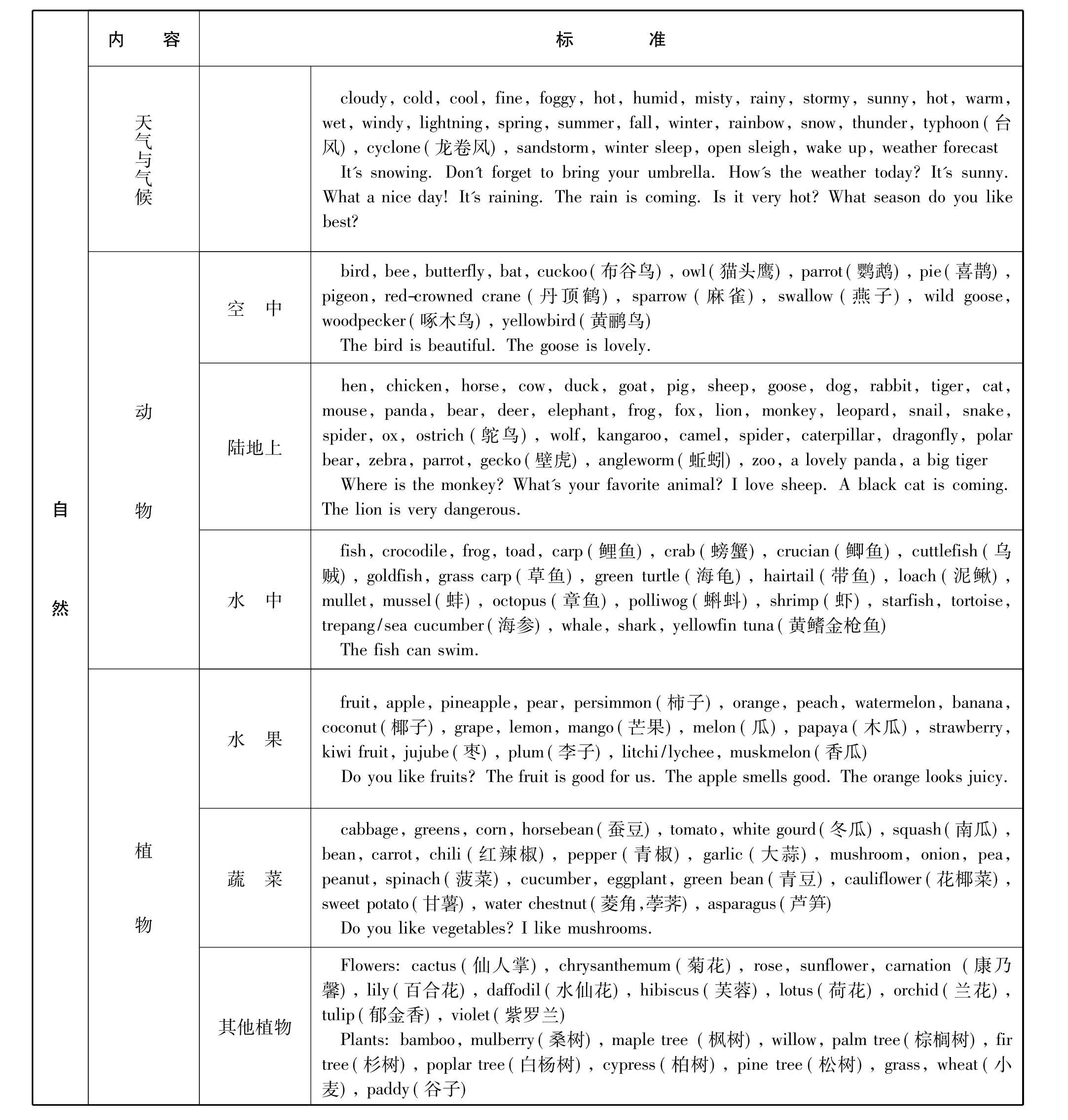
续表

2.参考用语
1)How many seasons are there in a year? What are they?一年有几个季节?分别是什么?
2)What is the weather like today?今天天气怎样?
3)What animals can foresee the weather? How can they do it?哪些小动物会预报天气?它们是怎么预报天气的?
4)Guess what will sink and what will float.猜猜哪些东西会沉下去,哪些东西会浮起来? 5)Please write down what you have seen.请把你观察到的记录下来。
6)What has happened? Why did it happen?发生了什么变化?为什么会发生这样的变化呢? 7)Let's do an experiment.让我们一起做个小实验。8)Do you have any questions?你还有什么问题?
9)Try to work out the problem with your friend.和你的朋友讨论一下应该怎样解决。10)Do you know these tools?你认识这些工具吗?
11)What can the tools be used for?这些工具可以用来做什么?
12)It is very hot in summer and very cold in winter.夏天炎热,冬天寒冷。
13)What's that over your head/below you/in front of you/behind you/on your left/on your right?你的上/下/前/后/左/右有什么?
14)What will happen if we mix two colors together?两种颜色混在一起会发生什么变化?
15)How can a tadpole turn into a frog?小蝌蚪是怎样变成青蛙的?
16)My pet(rabbit)can hop.我的宠物会跳。
My pet(fish)can swim.我的宠物会游。
My pet(bird)can fly.我的宠物会飞。
My pet(dog)can run.我的宠物会跑。
My pet(tortoise)can crawl.我的宠物会爬。
17)Can you hop like a rabbit?你能像兔子一样跳吗?
Can you jump like a frog?你能像青蛙一样跳吗?
Can you waddle like a duck?你能像鸭子一样走路吗?
Can you run like a dog?你能像狗一样奔跑吗?
Can you fly like a bird?你能像小鸟一样飞翔吗?
Can you swim like a fish?你能像鱼儿一样畅游吗?
(三)幼儿园自然科学双语教学活动例举
案例8 The Animals in the Picture图画里的动物(大班)
苏州新区狮山中心幼儿园 诸玲霞
Teaching Objectives活动目标
1.能够在教师的引导下,用完整的语句来介绍图画里动物的生活习性,大胆回答教师的提问。
2.按照动物的生活习性,将各种动物与其生活环境匹配分类,进行简单的粘贴组画并统计。
3.体验与同伴分工合作所带来的快乐。
Preparations活动准备
各种动物的图片、背景图、统计表等共4套。
Procedures活动过程
1.Warming up
1)Go into the classroom singing the chant The Cat's Got the Measles.
2)Daily dialogue.
T:Good morning.
How do you feel today?
What's the weather like today?
(鼓励幼儿用完整的句子大胆回答老师的问题。)
2.Presentation基本部分:粘贴组画、统计表述、完整语句表达
1)看图说话:图画背景讲述
T:Today I bring here a picture.Let's have a look.
将具有情景性的图片面向幼儿,图片上有天空、绿色的大地和蓝色的水面。
T:What can you see in the picture?
教师提问,让幼儿将注意力转移到天空、绿色的大地和蓝色的水面上。
在幼儿回答的基础上出示图片并强调in the sky,on the ground,in the water。
2)看图说话:小动物生活习性讲述
T:What's this? What can ...do? Where does ...live?
根据幼儿的回答把动物贴到相应的位置。(用夸张的动作撕动物背后的双面胶,为后面的幼儿操作做示范。)
T:How many ...are there in the picture? What's the difference between these ...?
这部分加入同类动物的不同点比较,请幼儿讲述区别,根据具体情况适当加入加法的内容。
3)统计记录分类讲述
T:How many animals are there in the sky? How many animals are there on the ground? How many animals are there in the water?
4)分组粘贴组画、统计记录
①教师讲述要求:将教师准备的材料合作组合成一幅画;幼儿自己商量分工——介绍图画里的动物、讲述统计表。
T:I've prepared a piece of paper for each group.You should put these animals on the right place.And this form is also for you to record the numbers.Choose one of you to record the number,and another one to introduce the picture.
②幼儿分组操作、教师指导。
5)分工表述图画、统计结果,并回答教师的提问
教师根据幼儿介绍情况提问幼儿:Which animal is like the flower? How many ...can you see in the picture? What's the difference between these ...? Who's the tadpoles' mommy? How do the tadpoles become frogs?
3.Closure结束部分:三组统计表述
1)教师总结幼儿讲述内容,将分组统计表合并统计。
T:In these pictures how many animals are there in the sky?
In these pictures how many animals are there on the ground?
In these pictures how many animals are there in the water?
2)教师带着孩子边唱Eensey Weensey Spider边走出教室。
案例9 The Eggs卵
苏州幼师附属花朵幼儿园 罗 静
Teaching Objectives活动目标
1.初步了解常见的一些卵生动物。
2.活动中能认真倾听,并且对仿编儿歌感兴趣。
3.能积极、投入地参与游戏活动。
Preparations活动准备
课件(The Egg),各种卵生动物的图片。
Procedures活动过程
1.Warming up
T:Please look at the picture.What is it?(出示蛋)
C:An egg.
T:Yes.The animal hides itself in the egg.Now let us guess what is in it?(幼儿自由猜测)OK! Let's say it together,OK?(教师逐一出示头、翅膀、尾巴、脚,带领幼儿边念儿歌)
Head head,come out.
Wings wings,come out.
Tail tail,come out.
Feet feet,come out.
Baby bird,come out.
T:Now it becomes a ...
C:Bird.
T:Yes,a bird.A baby bird.A baby bird.
T/C:A baby bird.A baby bird.
2.Presentation—Let's Guess
1)T:Look.What is it?
C:An egg.
T:Yes.An egg.An animal hides itself in the egg.Let us try to guess,OK? Listen!(教师播放课件:恐龙的吼叫声)Who wants to try?(猜对则播放“掌声”,以示鼓励)
T:Now,let us call it,OK? Please act like an egg.Are you ready? Read a rhyme about a duck.One,two,start.
Head head,come out.
Tail tail,come out.
Feet feet,come out.
Baby dinosaur,come out.
T:Say“hello”to the dinosaur.
(同样方法猜下面的动物)
2)T:All these animals come out of eggs.Do you know others?(教师根据幼儿的回答,出示图片,并朗读)
3)T:Look.There are one,two,three,four eggs.Among these eggs,which one is the biggest? Which one is the smallest?(教师根据孩子的回答分别点击“掌声”及“降声”)
3.Game
T:Let us play a game.OK? We act out these animals with the music.(幼儿根据屏幕上的动物,分别来扮演小动物)
T:Now,let us go out and play games.OK? Let's go.
(备注:此案例为2003年12月课题《幼儿英语教育渗透式探索》中期汇报开设的公开活动。)
(四)相关链接
1.国外教案
Objectives
Students will
●identify and describe three states of water;
●observe and predict how water will change states.
Materials
●water
●1 electric tea kettle
●crushed ice(about 1/3 liter)
●funnel
●1 plastic liter bottle
●1 small plastic baggie
●1 rubber band
●1 black permanent marker
●1 ruler
●white paper:1 sheet per student
●crayons or colored pencils
Procedures
(1)To begin the lesson,fill an electric kettle with water and plug it in.Ask students to tell you what they think will happen when the kettle heats up.Have students watch the kettle as it heats,and ask them to tell you what they observe.Explain that steam is a form of water and that they are observing evaporation,the process by which a liquid becomes a gas.Write the words“steam”and“gas”on the board.
(2)After watching the program,hold a class discussion about water.Ask students to tell you what they learned about water.Write their comments on the board for reinforcement.
(3)Tell students that water has three states:liquid,solid,and gas.Show students the plastic liter bottle and tell them they will observe water changing into different states.Ask a volunteer to help you use the funnel to fill the bottle about one-third full with crushed ice.Have another volunteer help you place the baggie over the bottle top and seal it in place with a rubber band.
(4)Have a student help you measure the level of ice in the bottle with a ruler.Move through this part quickly before the ice melts,and ask a few students to confirm the measurement.Make sure that the class agrees with the accuracy of the measurement,then ask a volunteer to help you draw a line on the bottle that indicates the level of ice.Write the words“ice”and“solid”next to this line.
(5)Place the bottle in the sun or in a warm area of the classroom where students can observe it.Have students divide a sheet of paper in half.On the upper half,they will draw pictures predicting what they think will happen to the ice in the warmth.Encourage students who are able to write words or sentences that describe their pictures.
(6)After about 30 minutes,ask students to look at the bottle and describe what they see.What has happened to the ice? What is happening in the bottle?
(7)Ask volunteers to measure the water level.When the class is satisfied with the accuracy of the measurement,ask a volunteer to help you draw a line on the bottle that indicates the new water level.Write the words“water”and“liquid”next to this line.
(8)Place the bottle in the warmth again and ask students to predict what they think will happen if the bottle stays there overnight.Have them draw pictures and,if able,write words or sentences on the lower half of the paper.
(9)The following day have students observe the changes that occurred in the bottle.What has happened to the water level? Where did the water go? Point out the droplets of water that have formed in the baggie.How did the water get into the baggie?
(10)Have students share their observations and talk about the accuracy of their predictions in a class discussion.Talk about temperature and how it helps water change states.Ask students to tell you about the different forms of water and to describe how water changes from one state to another.
(资料来源http://school.discovery.com)
2.活动参考及资源
(1)Animals and Their Babies(小动物词汇)
Match 10 farm animals words with their babies.The farm animals and babies are:sheep—lamb,cat —kitten,dog—puppy,pig—piglet,cow—calf,goose—gosling,horse—foal,duck—duckling,goat—kid,chicken—chick.
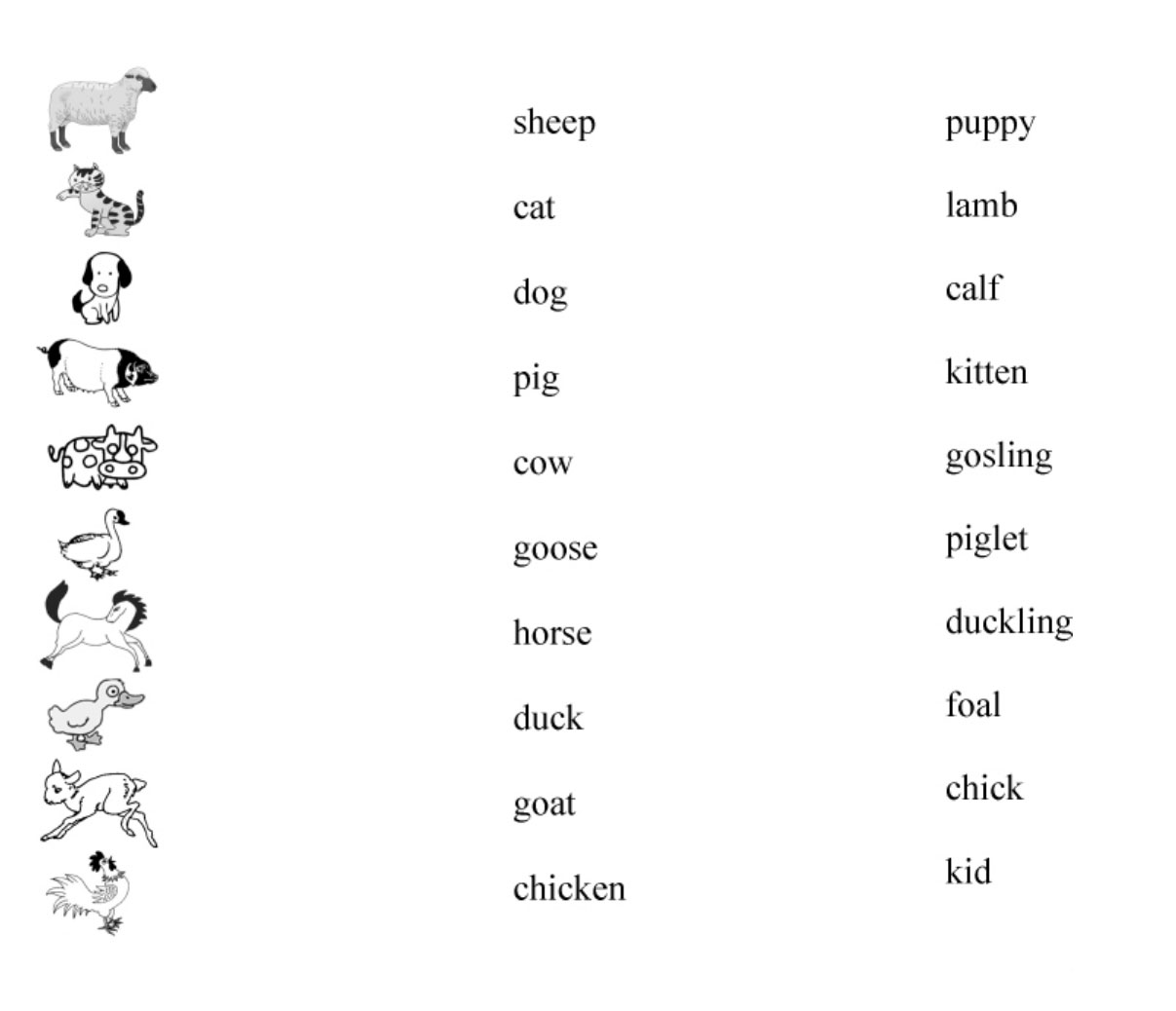
(2)Sounds of Animals(动物的叫声)
(母鸡)咯咯声叫:hens—chuck/cackle 蚊子叫:mosquitoes—hum
(公鸡)啼鸣;喔喔声:cocks—crow 昆虫叫:insects—chirp
鸭子嘎嘎叫:ducks—quack 狮虎叫:lions—roar
狼叫:wolves—howl 马叫:horses—neigh
蛇叫:snakes—his 喜鹊叫:magpies—chatter
青蛙呱呱叫:frogs—croak 猫头鹰叫:owls—hoot
蜜蜂嗡嗡叫:bees—buzz 猴子叫:monkeys—chatter
小鸡唧唧叫:chickens—cheep 海鸥叫:gulls—mew
猫咪叫:cats—meow/meow 驴叫:donkeys—hee-haw
狗、狐狸吠:dogs,foxes—bark (猪等)咕噜:pigs—grunt
小鸟叽叽叫:birds—chirp/twister 牛哞哞叫:cows—moo
鹅叫:geese—cackle (鼠等)吱吱声:mice—squeak
(3)Useful Vocabulary(有用词汇)
①春天词汇
Match 10 spring vocabulary words to their pictures.
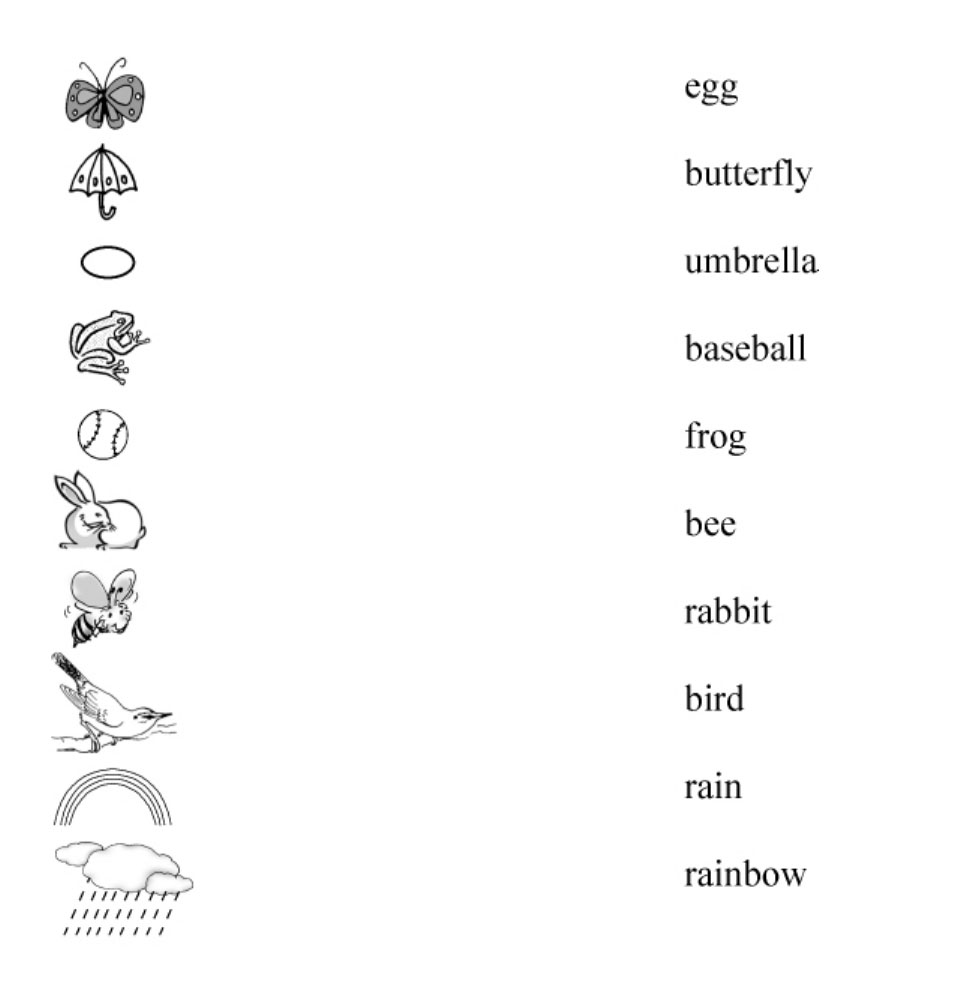
②夏天词汇
Match 10 summer vocabulary words with their pictures.
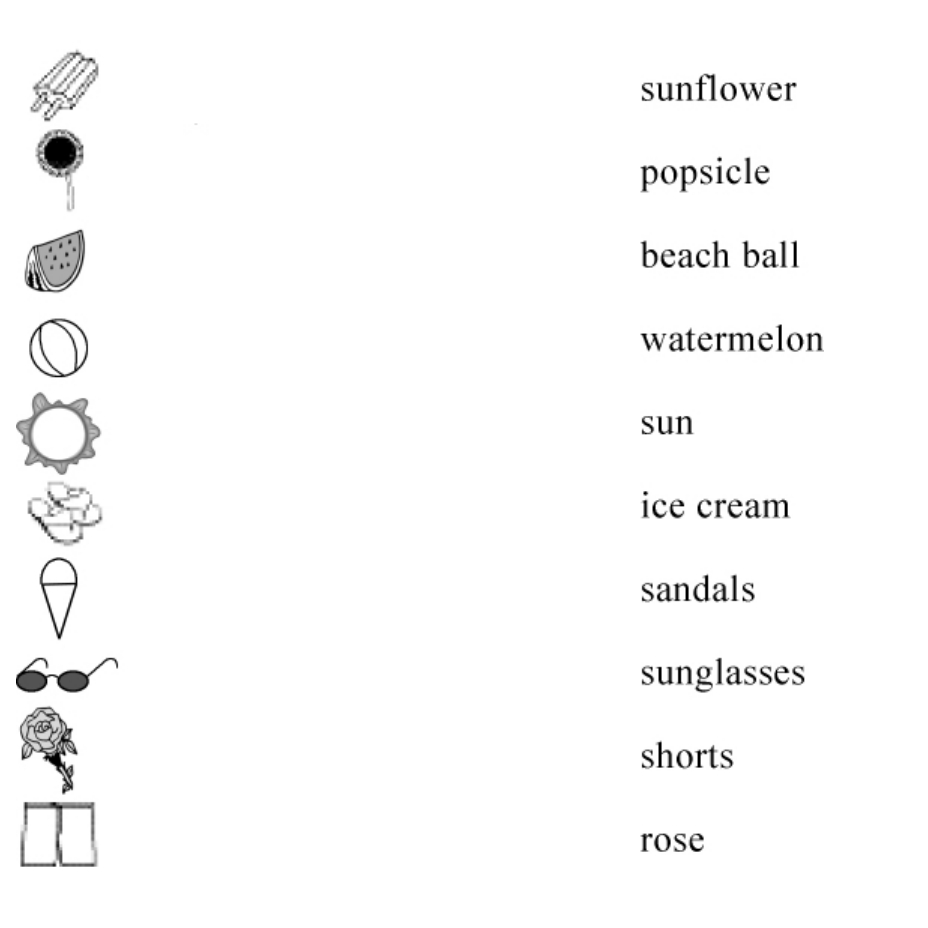
③秋天词汇
Match 10 fall vocabulary words with their pictures.
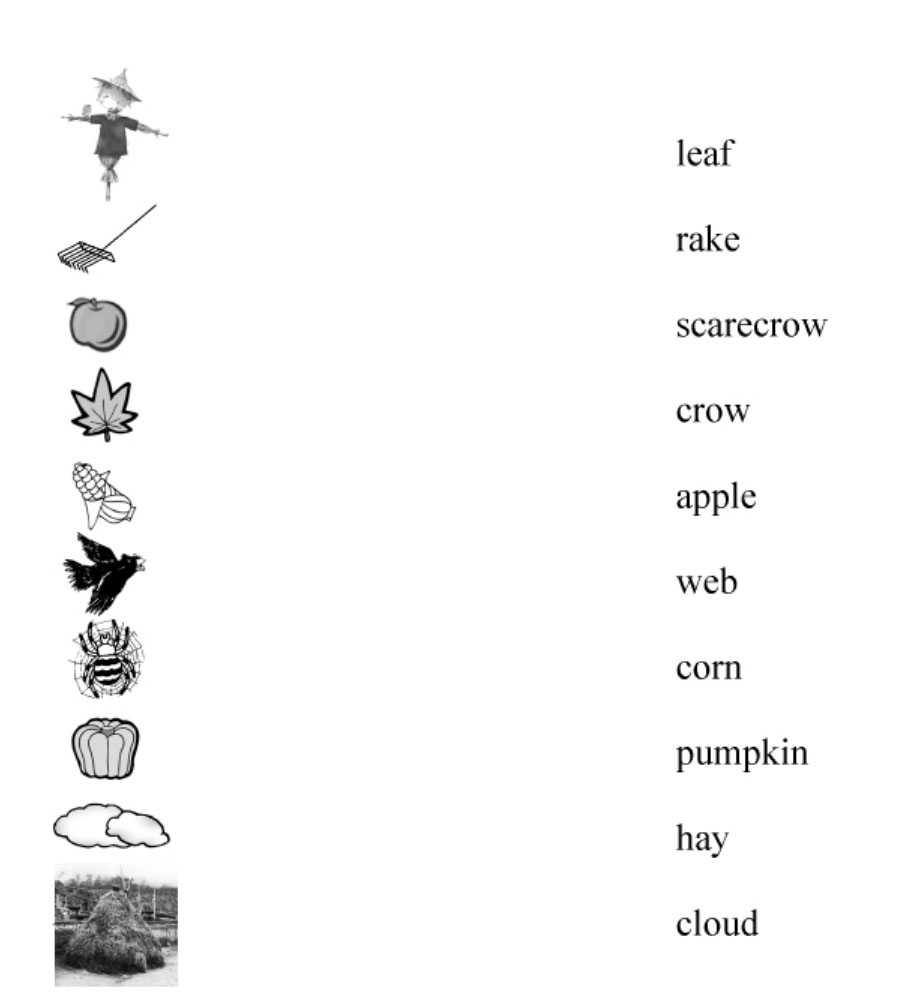
④冬天词汇
Match 10 winter vocabulary words with their pictures.
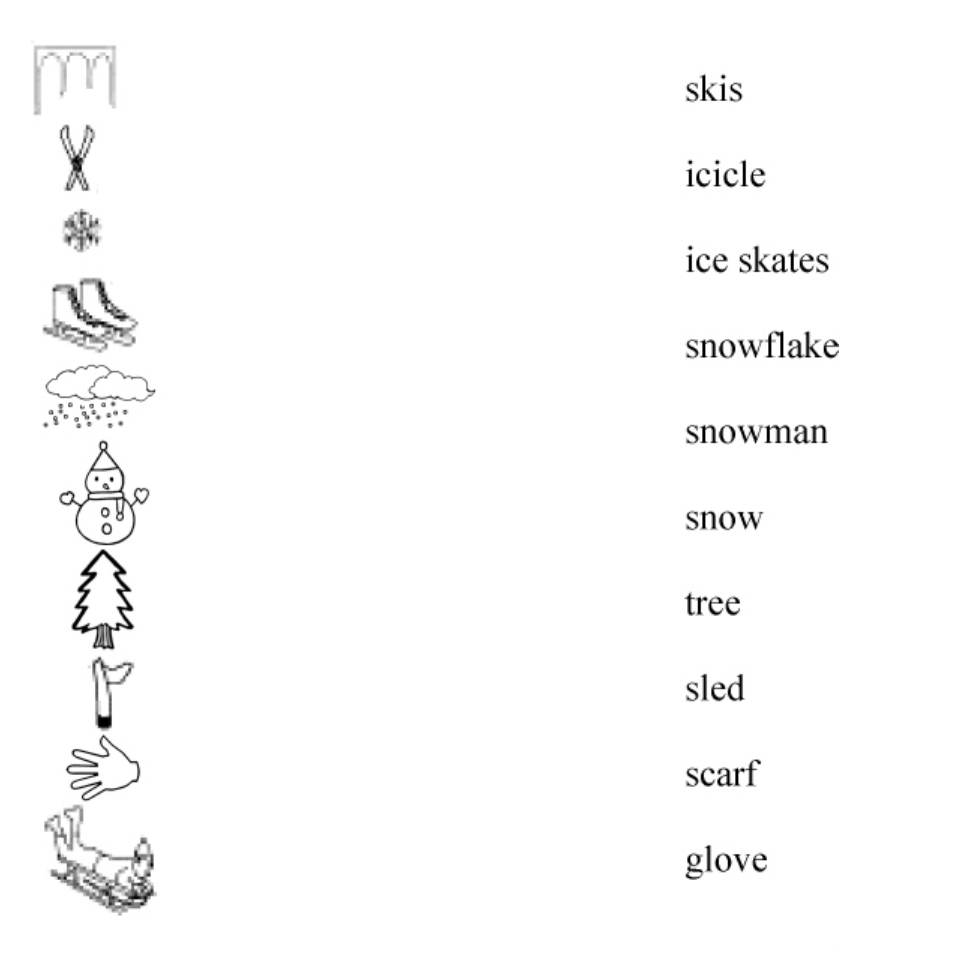
(资料来源http://www.enchantedlearning.com)
(4)Where Is the Apple?
Cut 8 trees and put them on paper along with the following sentences:
The apple is over the tree.
The apple is under the tree.
The apple is in front of the tree.
The apple is behind the tree.
The apple is in the tree.
The apple is beside the tree.
The apple is between the trees.
(5)Apple Finger Plays
Eat an apple.
Save the core.
Plant the seeds.
And grow some more.
* * * * * * * * *
If I had two apples,
What would I do?
I'd keep one for me.
And give the other one to you.
* * * * * * * * *
Here I have five apples.
And here are five again.
How many apples altogether?
Why,five and five make ten!
* * * * * * * * *
How many apples
Do you see?
Can you count them?
1,2,3.
How many green ones?
How many red?
Now eat an apple
And go to bed!
(资料来源http://www.kinderkorner.com)
免责声明:以上内容源自网络,版权归原作者所有,如有侵犯您的原创版权请告知,我们将尽快删除相关内容。















